Spring Boot 1.入门
spring boot简介
- Spring Boot来简化Spring应用开发,约定大于配置,去繁从简,just run就能创建一个独立的,产品级别的应用
- 背景:
J2EE笨重的开发、繁多的配置、低下的开发效率、复杂的部署流程、第三方技术集成难度大。 - 解决:
“Spring全家桶”时代。
Spring Boot J2EE一站式解决方案Spring Cloud 分布式整体解决方案 - 优点:
快速创建独立运行的Spring项目以及与主流框架集成
使用嵌入式的Servlet容器,应用无需打成WAR包
starters自动依赖与版本控制
大量的自动配置,简化开发,也可修改默认值
无需配置XML,无代码生成,开箱即用
准生产环境的运行时应用监控
与云计算的天然集成
微服务
- 2014,Martin fowler
微服务:架构风格(服务微化)
一个应用应该是一组小型服务;可以通过 http的方式进行互通
单体应用: all in ond

微服务:每个功能元素最终都是一个可独立替换和独立升级的软件单元
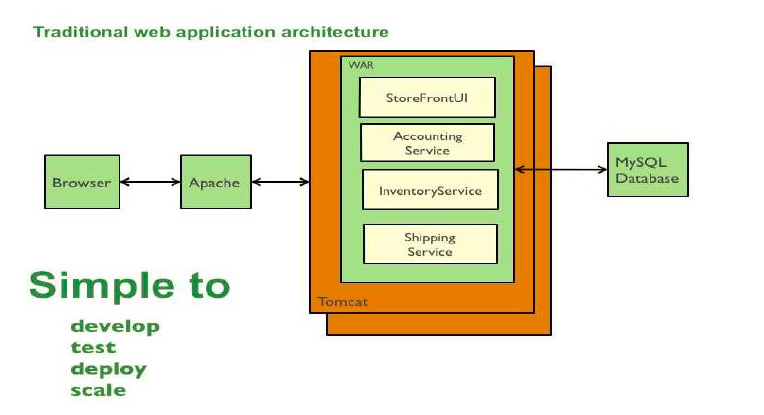

详细参照微服务文档
环境准备
- jdk 1.8
- maven 3.X
- idea:2020
- spring boot 1.5.9.RELEASE
maven设置
- 给maven 的settings.xml配置文件的profiles标签添加
<profile>
<id>jdk‐1.8</id>
<activation>
<activeByDefault>true</activeByDefault>
<jdk>1.8</jdk>
</activation>
<properties>
<maven.compiler.source>1.8</maven.compiler.source>
<maven.compiler.target>1.8</maven.compiler.target>
<maven.compiler.compilerVersion>1.8</maven.compiler.compilerVersion>
</properties>
</profile>
idea设置
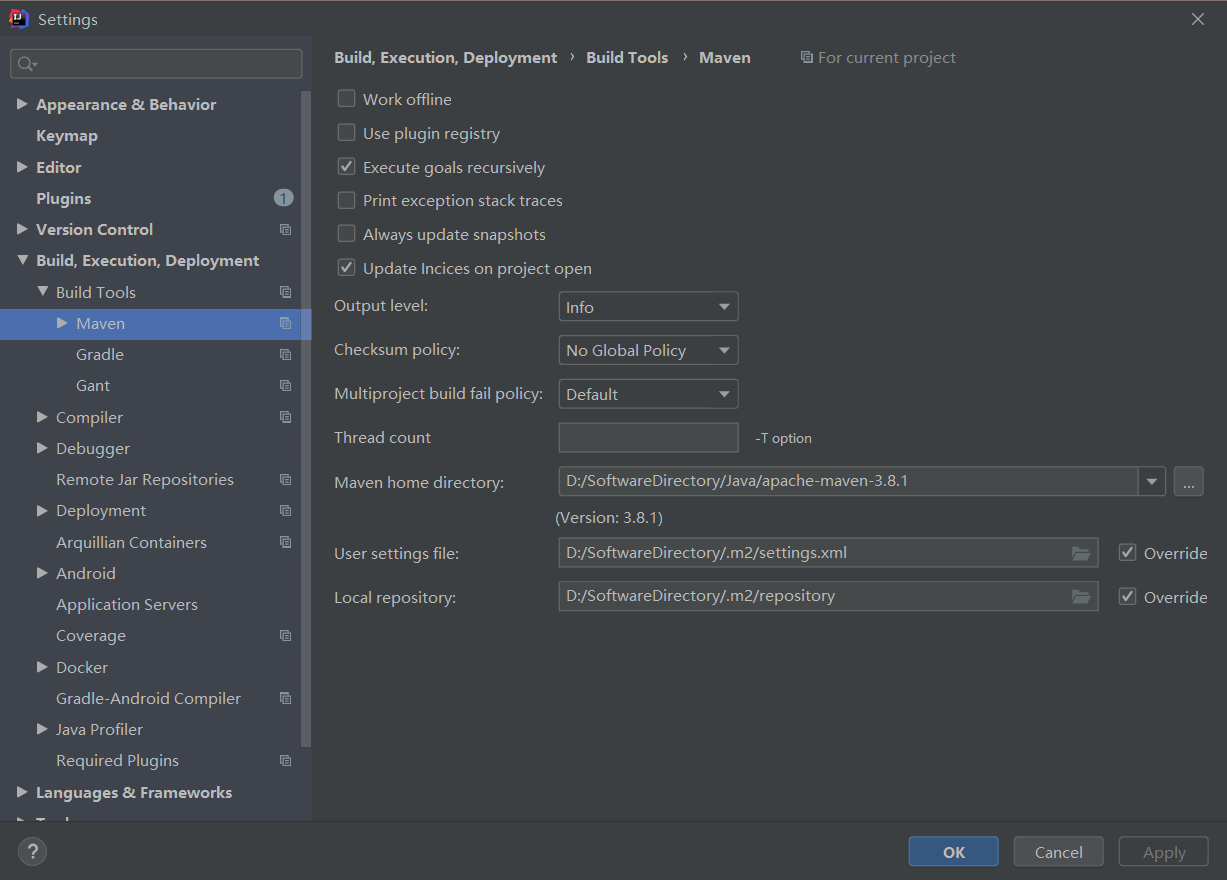
spring boot-hello word
- 一个功能:
浏览器发送hello请求,服务器接受请求并处理,响应Hello World字符串;
创建一个 maven工程;jar
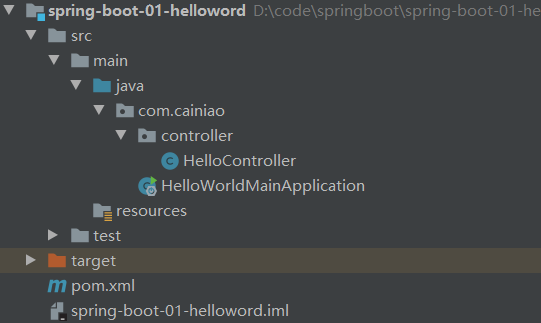
导入 spring boot相关的依赖
<!--导入 springboot 父项目-->
<parent>
<artifactId>spring-boot-starter-parent</artifactId>
<groupId>org.springframework.boot</groupId>
<version>1.5.9.RELEASE</version>
</parent>
<dependencies>
<!--spring-boot-starter :springboot场景启动器,帮我们导入了web模块正常运行所依赖的 jar包-->
<dependency>
<groupId>org.springframework.boot</groupId>
<artifactId>spring-boot-starter-web</artifactId>
</dependency>
</dependencies>
<!--这个插件,可用将应用打包成一个可执行的 jar包-->
<build>
<plugins>
<plugin>
<groupId>org.springframework.boot</groupId>
<artifactId>spring-boot-maven-plugin</artifactId>
</plugin>
</plugins>
</build>
编写一个主程序;启动 spring boot应用
/**
* @SpringBootApplication 来标注一个主程序类, 说明这是一个Spring Boot应用
*/
@SpringBootApplication
public class HelloWorldMainApplication {
public static void main(String[] args) {
//Spring 应用启动起来
SpringApplication.run(HelloWorldMainApplication.class, args);
}
}
编写相关的 Controller,Service
//@ResponseBody //这个类的所有方法返回的数据写给浏览器.(如果是 对象转为 json数据)
//@RestController //RestController 就是 controller和 responseBody的合体
@Controller
public class HelloController {
@ResponseBody
@RequestMapping("/hello")
public String hello() {
return "Hello World!";
}
}
运行主程序测试
hello word探究
pom文件
父项目
<parent>
<groupId>org.springframework.boot</groupId>
<artifactId>spring‐boot‐starter‐parent</artifactId>
<version>1.5.9.RELEASE</version>
</parent>
他的父项目是:
<parent>
<groupId>org.springframework.boot</groupId>
<artifactId>spring-boot-dependencies</artifactId>
<version>1.5.9.RELEASE</version>
<relativePath>../../spring-boot-dependencies</relativePath>
</parent>
他来真正管理Spring Boot应用里面的所有依赖版本;
- Spring Boot的版本仲裁中心;
以后我们导入依赖默认是不需要写版本;(没有在dependencies里面管理的依赖自然需要声明版本号)
启动器
<dependency>
<groupId>org.springframework.boot</groupId>
<artifactId>spring‐boot‐starter‐web</artifactId>
</dependency>
- spring-boot-starter-web:
spring-boot-starter:spring-boot场景启动器;帮我们导入了web模块正常运行所依赖的组件;
Spring Boot将所有的功能场景都抽取出来,做成一个个的starters(启动器),只需要在项目里面引入这些starter
相关场景的所有依赖都会导入进来。要用什么功能就导入什么场景的启动器
主程序类,主入口类
/**
* @SpringBootApplication 来标注一个主程序类,说明这是一个Spring Boot应用
*/
@SpringBootApplication
public class HelloWorldMainApplication {
public static void main(String[] args) {
// Spring应用启动起来
SpringApplication.run(HelloWorldMainApplication.class,args);
}
}
- @SpringBootApplication: Spring Boot应用标注在某个类上说明这个类是SpringBoot的主配置类,SpringBoot就应该运行这个类的main方法来启动SpringBoot应用;
@Target({ElementType.TYPE}) @Retention(RetentionPolicy.RUNTIME) @Documented @Inherited @SpringBootConfiguration @EnableAutoConfiguration @ComponentScan( excludeFilters = {@Filter( type = FilterType.CUSTOM, classes = {TypeExcludeFilter.class} ), @Filter( type = FilterType.CUSTOM, classes = {AutoConfigurationExcludeFilter.class} )} ) public @interface SpringBootApplication {- @SpringBootConfiguration
Spring Boot的配置类;标注在某个类上,表示这是一个Spring Boot的配置类;@Target({ElementType.TYPE}) @Retention(RetentionPolicy.RUNTIME) @Documented @Configuration //spring底层注解 @Component public @interface SpringBootConfiguration {- @Configuration: 配置类上标注这个注解;配置类 —-> 配置文件;配置类也是容器中的一个组件
- @EnableAutoConfiguration:开启自动配置功能;
以前我们需要配置的东西,Spring Boot帮我们自动配置;@EnableAutoConfiguration告诉SpringBoot开启自动配置功能;这样自动配置才能生效;@Target({ElementType.TYPE}) @Retention(RetentionPolicy.RUNTIME) @Documented @Inherited @AutoConfigurationPackage @Import({EnableAutoConfigurationImportSelector.class}) public @interface EnableAutoConfiguration {- @AutoConfigurationPackage:自动配置包;将主配置类(@SpringBootApplication注解的类)的所在的包及下面所有子包里面的所有组件扫描到 Spring容器
@Target({ElementType.TYPE}) @Retention(RetentionPolicy.RUNTIME) @Documented @Inherited @Import({Registrar.class}) public @interface AutoConfigurationPackage {- @Import : spring底层注解@Import,给容器中导入一个组件;导入的组件由 Registrar.class决定


- @Import : spring底层注解@Import,给容器中导入一个组件;导入的组件由 Registrar.class决定
- @Import({EnableAutoConfigurationImportSelector.class}):
给容器中导入组件?导入那些组件的选择器;将所有需要导入的组件以全类名的方式返回;这些组件就会被添加到容器中;会给容器中导入非常多的自动配置类(xxxAutoConfiguration);就是给容器导入这个场景需要的所有组件并配置好这些组件;有了这些自动配置类,免去了我们手动编写注入功能组件等工作 - EnableAutoConfigurationImportSelector的父类 AutoConfigurationImportSelector的 selectImports方法

- 这些自动配置类怎么就扫描这些?怎么得到的呐
主要调用了 SpringFactoriesLoader.loadFactoryNames(EnableAutoConfiguration.class,ClassLoader);作用是,从类路径下 META-INF/spring.factories中获取 EnableAutoConfiguration获取指定的值//获取后选的配置文件 protected List<String> getCandidateConfigurations(AnnotationMetadata metadata, AnnotationAttributes attributes) { //主要调用了loadFactoryNames() List<String> configurations = SpringFactoriesLoader.loadFactoryNames(this.getSpringFactoriesLoaderFactoryClass(), this.getBeanClassLoader()); Assert.notEmpty(configurations, "No auto configuration classes found in META-INF/spring.factories. If you are using a custom packaging, make sure that file is correct."); return configurations; } protected Class<?> getSpringFactoriesLoaderFactoryClass() { return EnableAutoConfiguration.class; } protected ClassLoader getBeanClassLoader() { return this.beanClassLoader; } public static List<String> loadFactoryNames(Class<?> factoryClass, ClassLoader classLoader) { String factoryClassName = factoryClass.getName(); try { Enumeration<URL> urls = classLoader != null ? classLoader.getResources("META-INF/spring.factories") : ClassLoader.getSystemResources("META-INF/spring.factories"); ArrayList result = new ArrayList(); while(urls.hasMoreElements()) { URL url = (URL)urls.nextElement(); Properties properties = PropertiesLoaderUtils.loadProperties(new UrlResource(url)); String factoryClassNames = properties.getProperty(factoryClassName); result.addAll(Arrays.asList(StringUtils.commaDelimitedListToStringArray(factoryClassNames))); } return result; } catch (IOException var8) { throw new IllegalArgumentException("Unable to load [" + factoryClass.getName() + "] factories from location [" + "META-INF/spring.factories" + "]", var8); } }
Spring Boot在启动的时候从类路径下的META-INF/spring.factories中获取EnableAutoConfiguration指定的值,将这些值作为自动配置类导入到容器中,自动配置类就生效,帮我们进行自动配置工作;以前我们需要自己配置的东
西,自动配置类都帮我们
j2ee 的整体整合解决方案和自动配置都在 spring-boot-autoconfigure-1.5.9.RELEASE.jar;
- @AutoConfigurationPackage:自动配置包;将主配置类(@SpringBootApplication注解的类)的所在的包及下面所有子包里面的所有组件扫描到 Spring容器
- @SpringBootConfiguration
使用 spring initialize快速创建 Spring boot项目
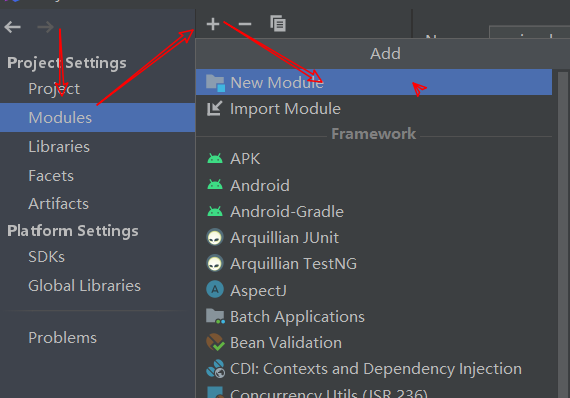
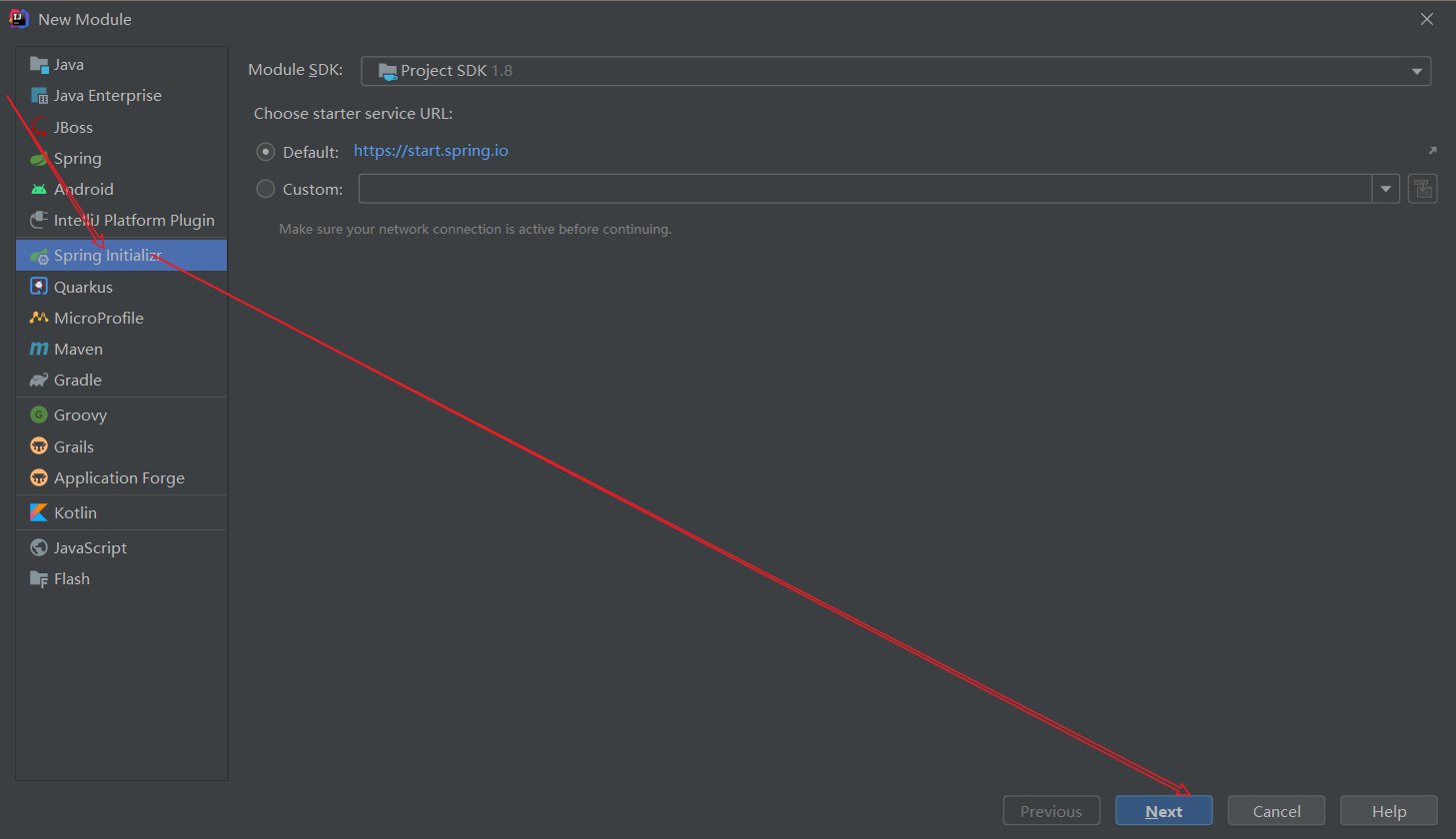
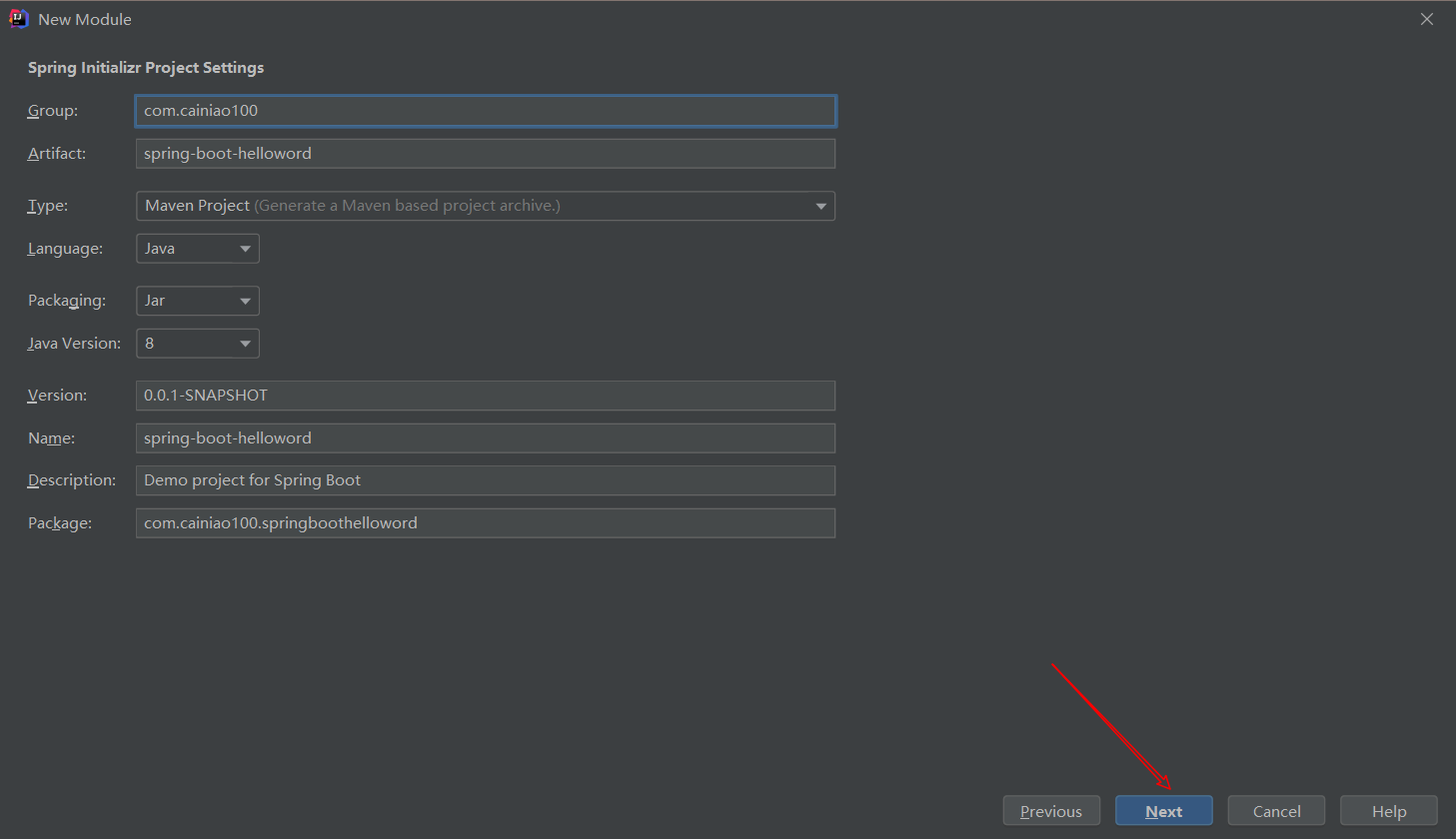
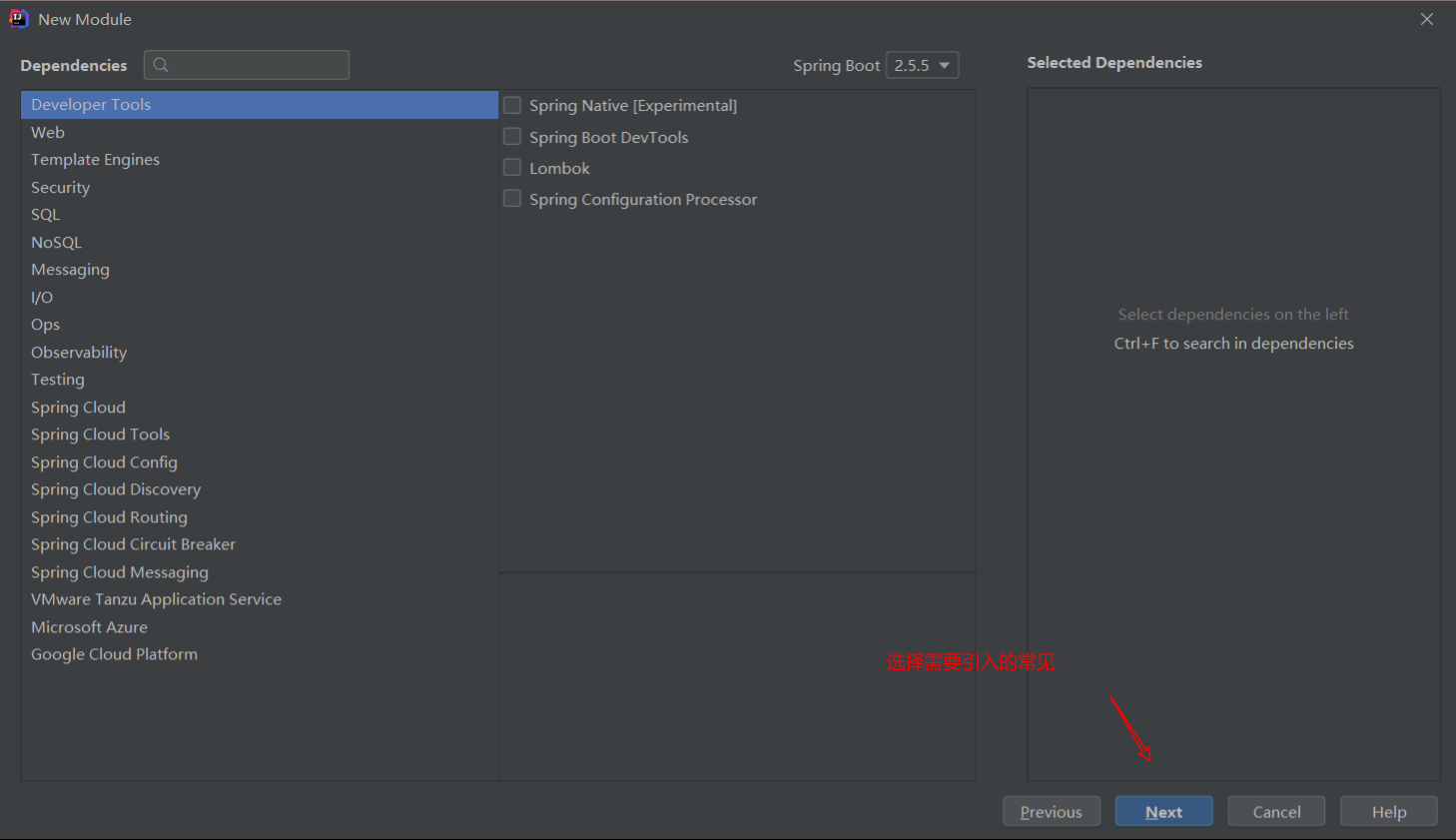
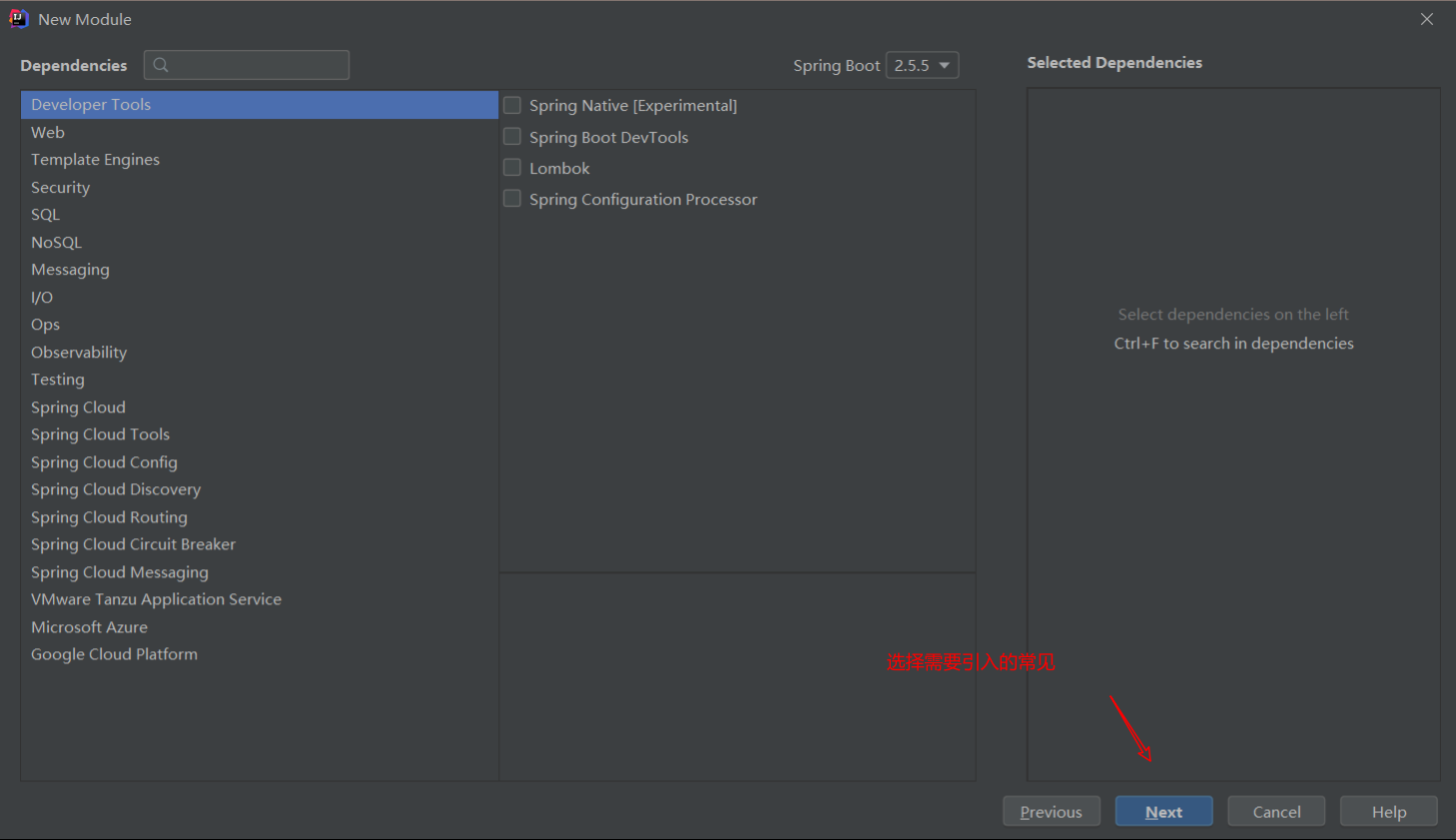
- idea都支持使用 Spring的项目创建向导快速创建一个 Spring Boot项目
选择我们生成的 Spring Boot项目- 主程序已经生成好了,我们只需要编写字节的逻辑
- resource文件夹中目录结构
- static:保存静态资源;js,css,images
- templates:保存所有模板页面;(Spring Boot默认jar包嵌入式的 tomcat,默认不支持 jsp页面);可以使用模板引擎(freemarker,thymeleaf)
- application.properties: Spring Boot应用的配置文件;可以修改一些默认配置


